Chapter 1. Chapter 1
Extended Case Study: Analyzing the Coverage of the Volkswagen and Takata Crises
Extended Case Study:
Analyzing the Coverage of the Volkswagen and Takata Crises
Richard Campbell, Christopher R. Martin, Bettina Fabos
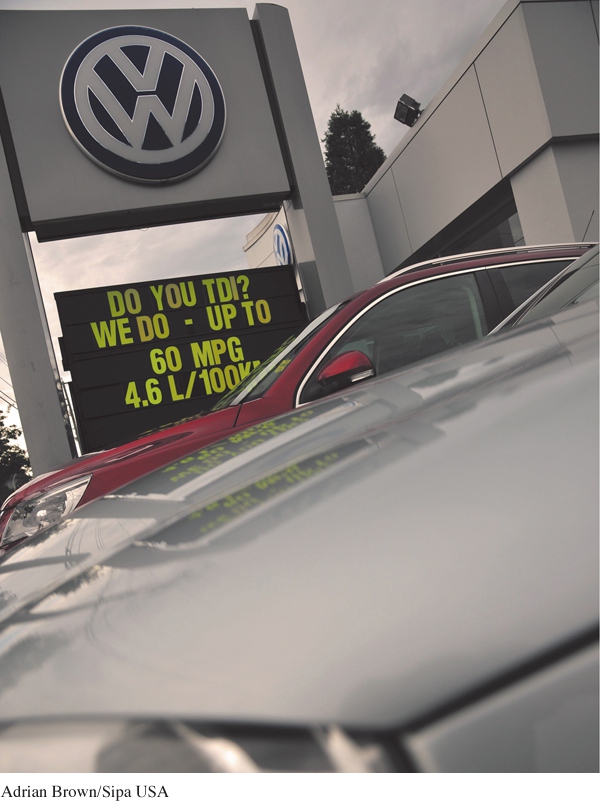
Volkswagen’s Public Relations crisis came fast. By midyear 2015, Volkswagen had finally surpassed both General Motors and Toyota to become the world’s largest automaker, with its VW, Audi, and Porsche brands. But a year later, its CEO had been fired, its worldwide sales had plummeted, and its settlement of two lawsuits had already cost the company up to $14.7 billion, a record payout for an automobile company. And that was just the beginning of the crisis.
In this activity, you will apply the critical process to analyze the coverage of the Volkswagen and Takata Crises. Click the forward and backward arrows to navigate through the slides. You may also click the above outline button to skip to certain slides.
What in the World did Volkswagen Do Wrong?
In a word, Volkswagen lied. And it wasn’t just a little lie, but a lie that was the foundation of the entire premise to market Volkswagen’s diesel cars as environmentally friendly. As Americans were waking up to the reality of global warming, Volkswagen’s TDI models—marketed as "clean diesel"—became very appealing. But the diesel cars weren’t so clean after all. Independent researchers at West Virginia University (WVU) tested emissions from a variety of diesel automobile models and found that all of them achieved their advertised emission levels except for the two Volkswagens, which did not have the low emissions expected of their "clean diesel" engines. The researchers checked and rechecked their results. "We did so much testing that we couldn’t repeatedly be doing the same mistake again and again," the lead researcher told NPR.1 It turns out that Volkswagen had secretly installed "defeat device" software in 2009–2015 TDI models of VW Jettas, Passats, Golfs, and Beetles, and the Audi A3. The software would detect when the cars were on a test cycle and ramp down the emissions for the test. Once the test cycle was completed, the car would return to its regular emissions levels, spewing up to forty times the amount of nitrogen oxide pollutants. But when WVU researchers took the Volkswagens out for some real-world driving to test emissions, they discovered the auto company’s deceit.
"Volkswagen turned nearly half a million American drivers into unwitting accomplices in an unprecedented assault on our atmosphere," said the deputy attorney general of the United States.2
Volkswagen was loath to admit its lie, too. For more than a year, VW executives referred to a "technical problem" and not their intentional deception.3 The company’s own PR was so bad, the New York Times wrote, "Someday, Volkswagen’s emissions cheating scandal will be studied in crisis communications textbooks. And not in a good way."4
In 2016, to settle lawsuits from the U.S. Federal Trade Commission and the state of California, Volkswagen pledged to pay up to $14.7 billion, a record settlement for an automobile company. Up to $10 billion was reserved for buying back or modifying vehicles, and $4.7 billion more was dedicated to fund emissions reduction programs and mitigate pollution caused by the vehicles.
Volkswagen’s problems could worsen. Other lawsuits are possible in the United States, and the largest number of diesel vehicles containing the emissions defeat device were sold in Europe (about 12 million polluting vehicles, compared to about 500,000 in the United States), where repeating a settlement similar to the one in the United States could exceed $100 billion.5
Interestingly, the Volkswagen crisis is not the worst automobile industry crisis of recent years. That prize goes to Takata, the manufacturer responsible for exploding automobile air bags, which send shrapnel into vehicle occupants, injuring or killing them. According to the National Highway Traffic Safety Administration (NHTSA), this is what happens to the faulty Takata air bags:
A combination of time, environmental moisture and fluctuating high temperatures contributes to the degradation of the ammonium nitrate propellant in the inflators. Such degradation can cause the propellant to burn too quickly, rupturing the inflator module and sending shrapnel through the air bag and into the vehicle occupants.6
By mid-2016, ruptured Takata air bag inflators had been blamed for fourteen deaths (ten of them in the United States) and more than one hundred serious injuries.7 The air bags tend to fail in hot, humid environments, putting drivers in Southern California, Florida, Texas, and the whole Gulf Coast in the most danger. One victim was a seventeen-year-old high school senior in Texas driving a 2002 Honda Civic. She was wearing a seat belt, and her car suffered only moderate damage after she rear-ended a car at an intersection. But the air bag explosion sent shrapnel through the air bag, which cut her neck and carotid artery, killing her.8 Those who have survived exploding air bag incidents have been blinded and scarred. Some of the faulty air bags have exploded spontaneously without ever being involved in a collision.
Although it is shameful that Volkswagen lied about and denied its emissions trickery, Takata’s record is even more dishonorable. Takata and Honda (the automobile company with the most recalled models using Takata air bags) were both aware of the faulty air bag problem as early as 2004 but issued no recalls until four years later—and only a limited recall at that time.9 In 2016, the extent of the problem more than doubled based on the U.S. government’s independent tests of the air bags, and the government expanded the defective air bag recall to include up to 69 million cars in the United States.10 At a press conference announcing the expansion of the recall, the administrator of the NHTSA called the Takata case "the largest and most complex recall in U.S. history," with the recall period lasting through 2019.11 Takata is one of just three major air bag manufacturers in the world, so its air bags have been used in nearly every major automobile brand, including Acura, Audi, BMW, Chevrolet, Chrysler, Daimler Trucks and Vans, Dodge/Ram, Ford, GMS, Honda, Infiniti, Mazda, Mercedes-Benz, Mitsubishi, Nissan, Pontiac, Saab, Saturn, Subaru, Toyota, and Volkswagen.
In the Volkswagen emissions case, less than a half million automobile owners in the United States were directly affected, and although excessive pollution emissions are bad for everyone in the long term, there were no immediate injuries or deaths from the company’s intentional deception. In the Takata case, up to 69 million cars were affected, causing fourteen worldwide deaths and more than one hundred injuries, with the potential for more. The question is, "Why is one of these crises receiving so much coverage in the news media, while the other—more expansive in scope, more dangerous in effect—is not?" What conditions in each of the stories has helped increase or deter publicity? For this extended case study, we will look at news stories of the Volkswagen and Takata crises, and comparatively analyze the coverage of each of these events.
As developed in Chapter 1, a media-literate perspective involves mastering five overlapping critical stages that build on one another: (1) description: paying close attention, taking notes, and researching the subject under study; (2) analysis: discovering and focusing on significant patterns that emerge from the description stage; (3) interpretation: asking and answering the "What does that mean?" and "So what?" questions about your findings; (4) evaluation: arriving at a judgment about whether something is good, bad, poor, or mediocre, which involves subordinating one’s personal views to the critical assessment resulting from the first three stages; and (5) engagement: taking some action that connects our critical interpretations and evaluations with our responsibility as citizens.
Step 1: Description
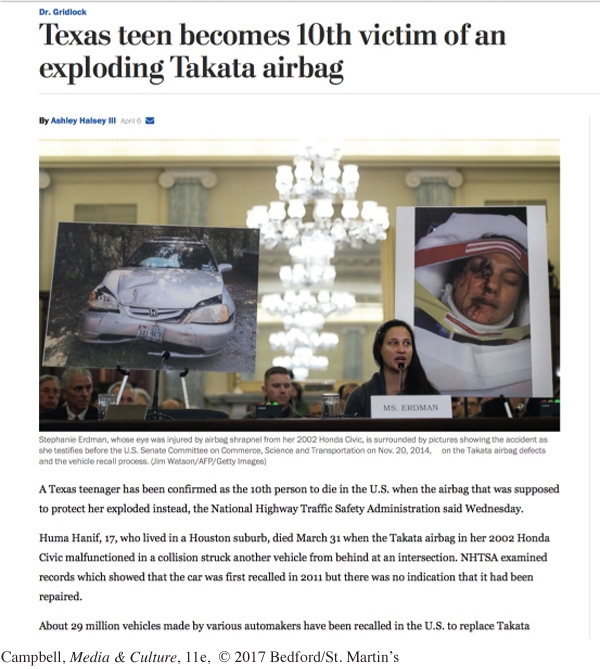
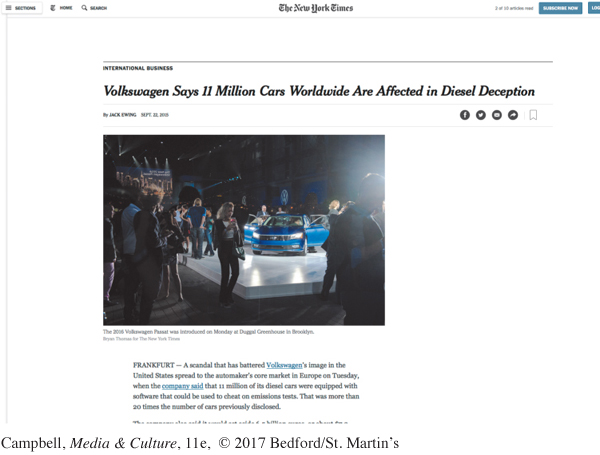
Given our research question, in the description phase you will need to research news media coverage of the Volkswagen and Takata stories.
One way to consider the news coverage comparatively is by the number of stories written on each case. Of course, these stories didn’t debut at the same time. Honda issued the first Takata air bag recall in 2008, but the first U.S. news reports about the Takata air bag problem didn’t come until 2010, when Honda expanded its recall to cover more than 800,000 vehicles. The Volkswagen story didn’t break until a September 18, 2015, news release by the Environmental Protection Agency (EPA), so it covers a much shorter period. We might expect the Volkswagen crisis to have fewer news stories, given that the period of analysis is less than a year, compared to more than six years for the Takata crisis.
Another way to critically analyze the two crisis narratives is to consider how each compares in terms of newsworthiness. As we note in Chapter 14 under “Characteristics of News” (page 452), journalists select and develop stories based on one or more criteria, including timeliness, proximity, conflict, prominence, human interest, consequence, usefulness, novelty, and deviance.
Use the space below to answer the following question.
Question
RhtdDgZ07alnOhnWGVyCaqiyYDYVHcFcMMYORF/BijHnUebekEDMh0l3sSiTNGDaNQzEPs3jiU0pA7yKJouL8Hw0vHEIkxaBqQx4/kl1yTy1KVC19QGQk1fCj2bN7WMH5FZsxsw5sMtQrrVXUXewE5JD/2qQiDWWyd0vXbFak4k=Step 2: Analysis
| Takata (2010 to mid-July 2016) |
Volkswagen (September 18, 2015, to mid-July 2016) |
|
|---|---|---|
| New York Times | 219 | 303 |
| Washington Post | 191 | 263 |
| USA Today | 63 | 72 |
Campbell, Media & Culture, 11e, © 2017 Bedford/St. Martin's
In the second stage of the critical process, you will isolate emerging patterns that call for closer attention. For example, which crisis has more news coverage? Our brief inquiry, using the LexisNexis database to search for stories, led to some interesting results. (See table.) Thus in all three news sources, the Volkswagen story received much more coverage, even with its much shorter time frame.
In analyzing newsworthiness, both automotive crises seem to meet all the criteria noted in Step 1. However, there might be some important differences in timeliness (the Takata story has developed over several years), proximity (Volkswagen cars and dealerships are visible across America, whereas few people would know which company makes the air bag hidden in their steering wheel), and prominence (Volkswagen is a well-known global brand, whereas Takata is global but invisible to most consumers). Nevertheless, the Takata narrative is clearly the one of greater consequence: The faulty device can be deadly, and the recall directly affects nearly 70 million people in the United States, compared to less than a half million for the Volkswagen emissions problem.
Use the space below to answer the following question.
Question
V+s9ZnI+Ha2VJPIrijT3Wxsa1MjEkB6+mgQCzb2qE11pqkQyGYlccYvxQHFu+uVo73ir2GTIcc657yZUXole8MrQZXqFXkRukhBxLBcwTTxa/DWS0xjYzPuZ5SMnf6e0CCCdf7cUpCNgM8lRGSS8FXTLTGSsvdypcdTFe4iqjY98SMa1EhJ1dp9CHntmHcyJypK7aAPBCkiK8McAs8gnNBz9tAkpvifLStep 3: Interpretation
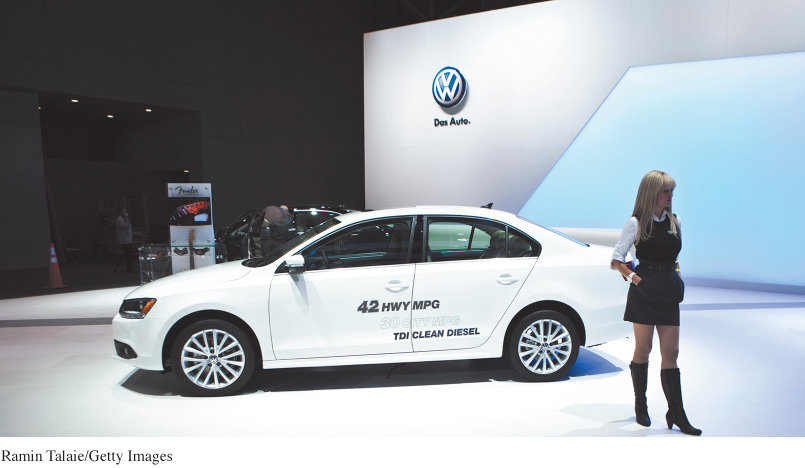
In the interpretation stage, you will determine the larger meanings of the patterns you have analyzed. The most difficult stage in criticism, interpretation demands an answer to the questions "So what?" and "What does all this mean?"
Our initial interpretation is that in many ways, the Volkswagen crisis is the easier story to cover. Instead of gradually building over several years (the news doesn’t do well with long-term stories, as noted in Chapter 14), the Volkswagen story broke in September 2015 with a big announcement by the EPA, charging that the company had cheated and violated the Clean Air Act.
Volkswagen is also a well-known name brand, placing at No. 18 in the world’s most valuable brands in 2015 (but falling sharply to No. 57 in 2016).12 Takata has never been on the Global 500 brand list. Largely because of Volkswagen’s visibility as a consumer icon, the polling company Gallup found that by October 2015 (less than a month after the story broke), 75 percent of U.S. consumers were familiar with the VW scandal.13 Conversely, automotive information resource Kelley Blue Book conducted a survey regarding Takata and found that "even though more vehicles are impacted by this recall than the five largest previous [recall] campaigns combined, only 52 percent of the survey participants were aware of the issue."14 As Chapter 14 notes, the media tends to report stories that feature prominent people, and the same goes for prominent companies and brands.
We should add one other point that helps interpret the disparity in coverage. Because the Takata story is longer and more complex, and the company is based in Japan, it’s the kind of story that requires a great deal of time and energy from investigative reporters. Few news organizations are able to devote resources to such a story, although the work of reporter Hiroko Tabuchi and her colleagues at the New York Times is a notable exception. Tabuchi is based in Tokyo and covers Japanese business and economics for the Times; in 2013, she was part of a Pulitzer Prize–winning team that investigated the global business practices of Apple and other technology companies.15 The blog on the Takata air bag recall for Car and Driver magazine by Clifford Atiyeh and Rusty Blackwell continually updates the story, and is another excellent resource that defies journalism’s chronic problem of not following a story over the long haul.16
Use the space below to answer the following question.
Question
WmKSx05z8f7O9jjOOTl/9iGBvlksqrwmi5Bitdy9pQQ58A2JXYuesXTTxrCuudK/gdwGEYHyS9lT91ODHG0xY57OnudY5MPxbFOJ40qHNWsuTMaCYeFUlu3TarkP9BjDfjkAtmZ0Z8d4j6ey4FVf5/wJz1xaDfBMStep 4: Evaluation
The evaluation stage of the critical process is about making informed judgments. Building on description, analysis, and interpretation, you can better evaluate the news media’s performance.
Based on your critical research, what do the Takata and Volkswagen stories say about the news media’s watchdog function? Are the U.S. news media covering each of these stories as well as they should for citizens?
Also, what do the stories say about the auto industry and who holds it accountable? Who is responsible for spreading the word about recalls of faulty or dangerous cars—automotive manufacturers and suppliers, government safety agencies, the news media, or all of them to the same degree?
Use the space below to answer the following question.
Question
7jPe0uPHWjSTUjlb3219VTvd0eBISjwc0USq8EGHhOD5jeUjGwS1QoOaFhmATWxx2zFU7gYJCxiMoqaM66FJ4bqLP3uUZNwb1RkRif1jmdakcn1HfEgjuLHx9gA8mcsnV8CjXjTN4VoXOYa1q9TE4cVclk6pNYIascS96/6/KOzjnQ5qStep 5: Engagement
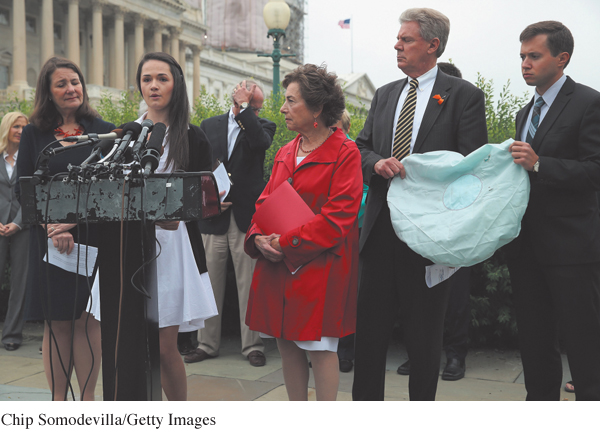
The fifth stage of the critical process—engagement—encourages you to take action, adding your own voice to the process of shaping our culture and environment.
Are your local news media (newspapers, television stations, radio stations, and Web sites) covering these stories adequately? Had you heard about the Volkswagen and Takata stories and recalls before reading this? If not, let the news media know that you and others need to hear more about these recalls.
There is a related question: If you buy a used car that may have had multiple owners and there is a recall, will you find out about it? (In the case of the Texas high school student who died from a Takata air bag, the car manufacturer, Honda, claimed it sent several recall notices, but the family said they never received anything.)
There is one answer, but you need to be proactive: The NHTSA operates a Web site, safercar.gov. The site carries news about automobile recalls, including the Volkswagen and Takata cases. You can look up your car, and those of family members and friends, on one page of the site: https://vinrcl.safercar.gov/vin/.
Finally, the latest in the Takata story, and it’s still not good: There are millions of cars with Takata air bags in the United States, and it will take at least until 2019 for all of them to be recalled. Because there are so many air bags yet to be replaced, the industry can’t keep up with the necessary production. Not only is there a considerable number of used cars being resold with the Takata air bags, but there are still new cars being sold that contain the air bags. This is shocking but legal, as the NHTSA believes the air bags won’t become faulty for several years, by which time the air bags will be recalled and replaced. But what if the drivers don’t find out about the recalls? As the Car and Driver blog notes, "It’s very confusing that automakers would be allowed to install parts that are known to be defective, except NHTSA thinks they won’t become defective until years later, at which time proper replacement parts will be available.17" There are four car companies still putting Takata air bags in their new cars: Fiat Chrysler, Mitsubishi, Toyota, and, yes, Volkswagen. See https://safercar.gov for full details.
Use the space below to answer the following question.